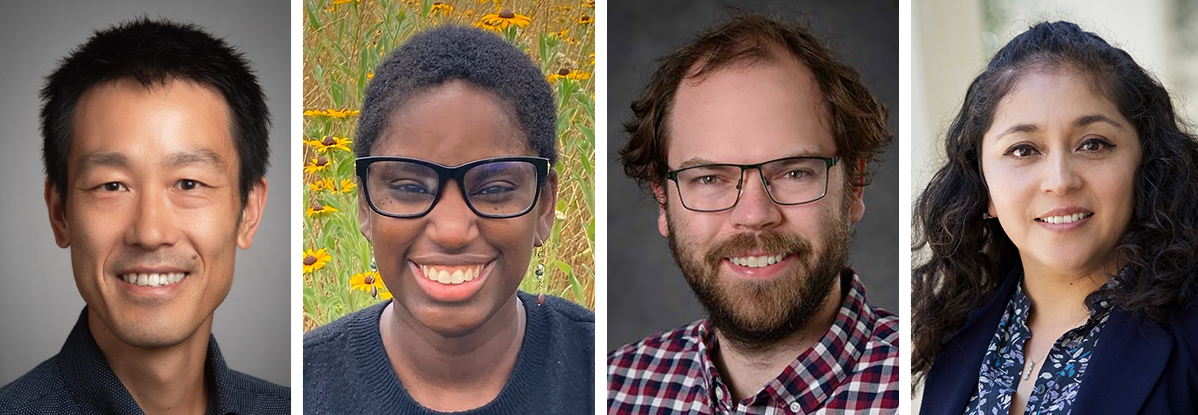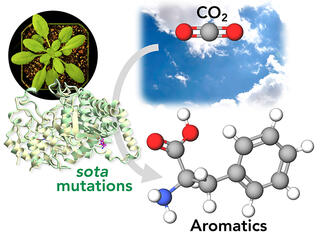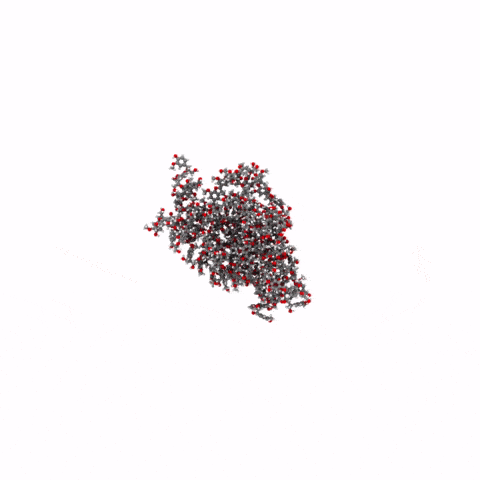
Four scientists with expertise in botany, soil health, and computational biology have joined the Great Lakes Bioenergy Research Center to support the center's mission of enabling sustainable plant-based fuels.
The researchers come from the University of Wisconsin–Madison, Michigan State University, and San Diego State University, a new partner for the UW–Madison-based center.
Their projects will explore ways to grow plants that capture more carbon dioxide and store it in useful compounds; the relationship between bioenergy crop systems and soil health; and use mathematical and computational modeling to better understand the biology of Zymomonas mobilis, a microbe considered as a potential star in the quest to replace fossil fuels.
Zuniga will build computational tools based on genome-scale metabolic models of Z. mobilis to study how the microbe produces ethanol and other useful chemicals.
Metabolic models can provide a way to exploit natural traits to develop new processes for production of biofuel and other products and to identify pathways that could allow it to consume different carbon sources.
The team will use other techniques to identify patterns in the way genes are regulated, which can lead to better understanding of how genes work together and improved biofuel production.

Hiroshi Maeda is a professor of botany at UW–Madison who studies plant metabolism to develop climate change solutions. Combining biochemistry, molecular biology, genetics, analytical chemistry, and synthetic biology, the Maeda lab investigates how plants regulate the conversion of carbon dioxide into chemicals and ways to enhance the production of beneficial compounds.
The lab recently discovered a series of mutations that caused Thale cress, a well-studied species used to understand the workings of other plants, to boost production of aromatic compounds while capturing more carbon dioxide from the atmosphere.
Their project aims to test whether that approach can work in two key bioenergy plants, sorghum and poplar, and the impact on plant growth and physiology. The Maeda lab will also test whether the mutation can be paired with GLBRC's Zip-Lignin technology, which redesigns plant cell walls to make it easier to clip off valuable aromatic chemicals.
Christine Sprunger, an associate professor of soil health at MSU, studies how agricultural management practices impact soil health, a metric that accounts for biological, chemical, and physical components of soil.
Sprunger’s project seeks to find and evaluate mechanisms through which soil health can contribute to the system resilience of bioengery cropping systems, including switchgrass, poplar, and restored prairie. The goal is to assess how bioenergy crops influence soil health and how soil health influences communities of soil microbes, how carbon accumulates in soil, and plant productivity.
Cristal Zuniga, a computational biologist, specializes in mathematical modeling and metabolic reconstruction of bacteria and other organisms. Her lab at San Diego State University integrates experimental and computational methods to study microorganisms in isolation, their interactions with other microbes, their environment, and their hosts.
 Using machine-learned atomic potentials, the Vermas lab can track deconstruction events in biomolecules, such as this lignin polymer. A complex chain of molecules that binds together plant sugars (cellulose and hemicellulose) and provides structural support, lignin is the largest natural source of aromatic compounds, but its irregular structure makes separating those valuable molecules challenging.
Using machine-learned atomic potentials, the Vermas lab can track deconstruction events in biomolecules, such as this lignin polymer. A complex chain of molecules that binds together plant sugars (cellulose and hemicellulose) and provides structural support, lignin is the largest natural source of aromatic compounds, but its irregular structure makes separating those valuable molecules challenging.Josh Vermaas is an assistant professor of biochemistry and molecular biology at MSU, where he is part of the university's Plant Research Laboratory.
Vermaas uses computer tools to create molecular-scale models of tiny biological structures. Using principles of physics, these models simulate movement over time to help scientists understand the connections between form and function. This knowledge can be used to engineer plants and microbes for more efficient production of biofuels and products.
His lab will use computational models to understand how various molecules move through cell membranes of Z. mobilis, which can be stressed by compounds introduced during biomass pretreatment as well as its own fermentation products. The insights will help guide efforts to engineer strains that can more efficiently remove these stressors.
Established in 2007 by the U.S. Department of Energy, GLBRC is one of four federally-funded bioenergy research centers conducting cross-disciplinary foundational research to enable breakthroughs needed for the cost-effective conversion of non-food plants into low-carbon replacements for jet fuel and other fossil-based products.
In 2024, the DOE approved another five-year round of funding for the center, which is based at UW–Madison’s Wisconsin Energy Institute in collaboration with MSU and researchers at Texas A&M University, Princeton University, the University of British Columbia, and now San Diego State University.